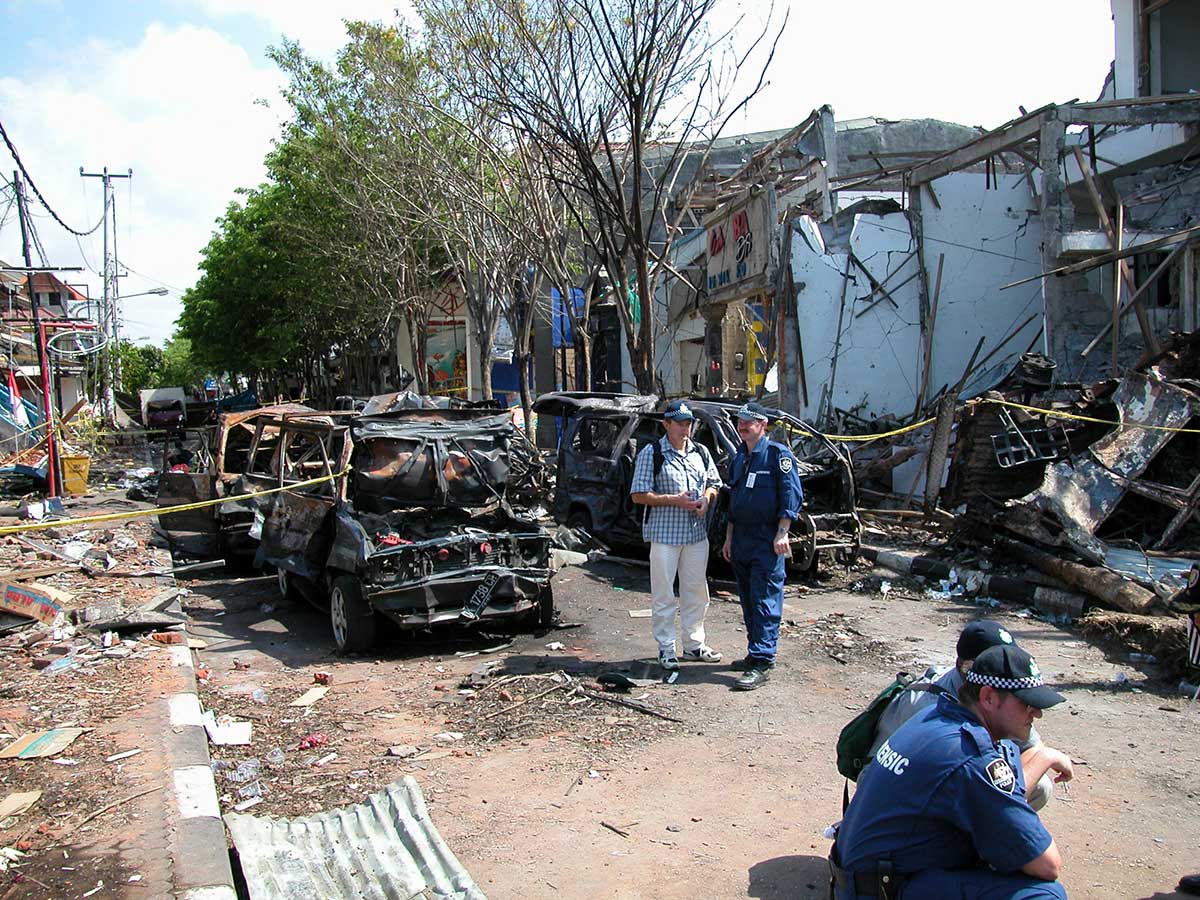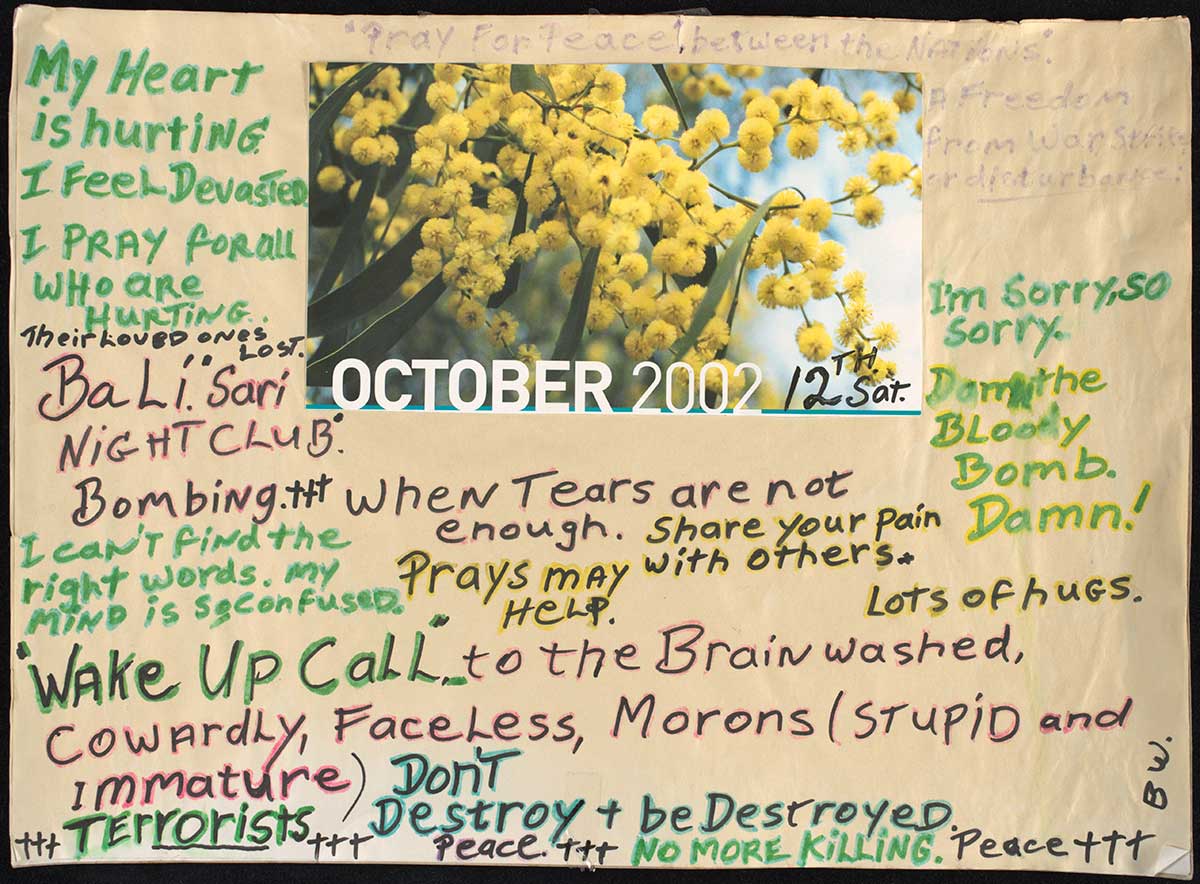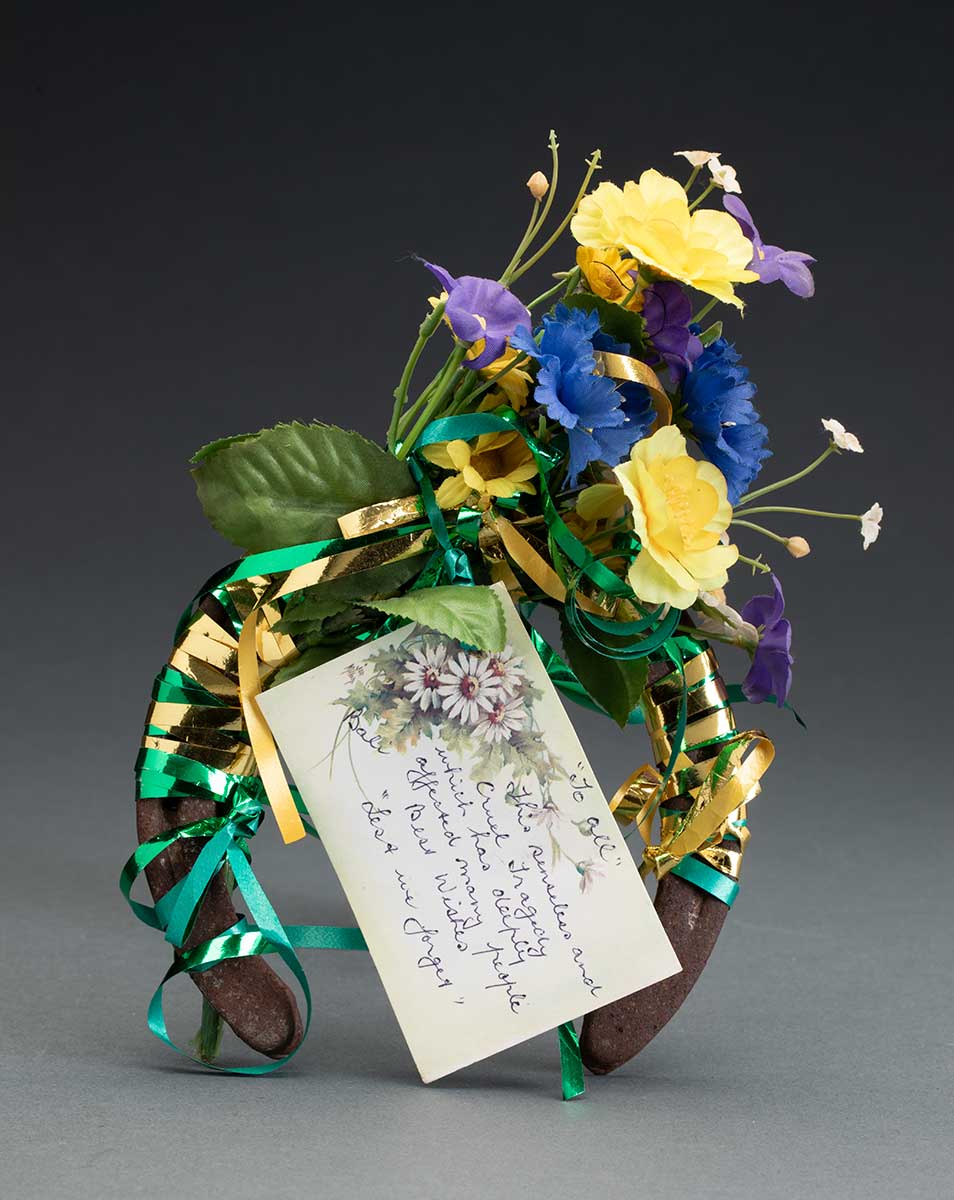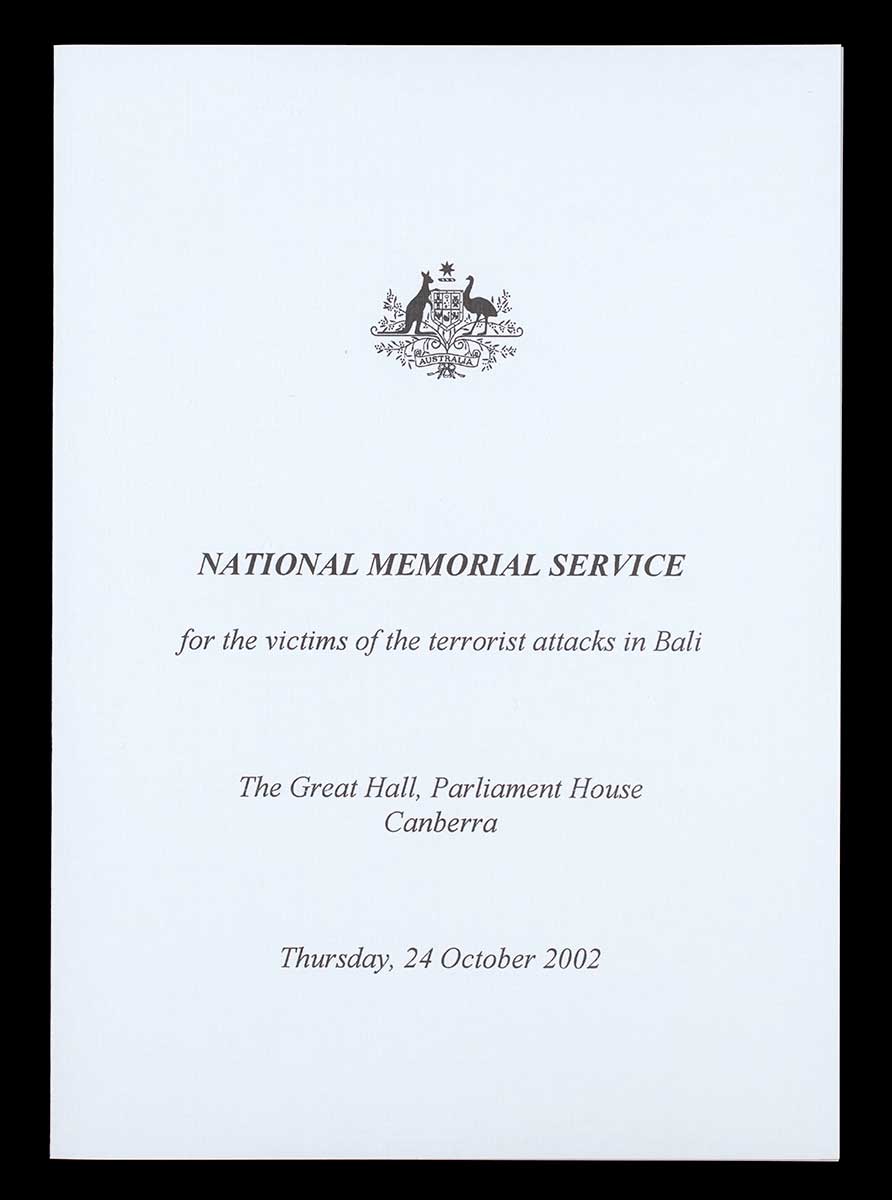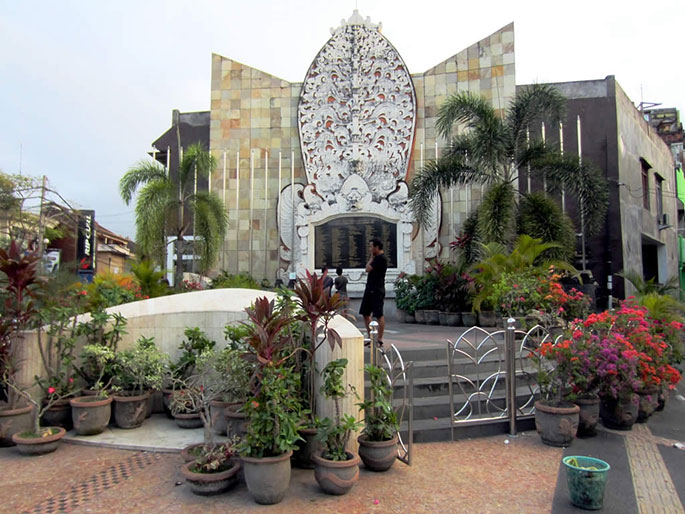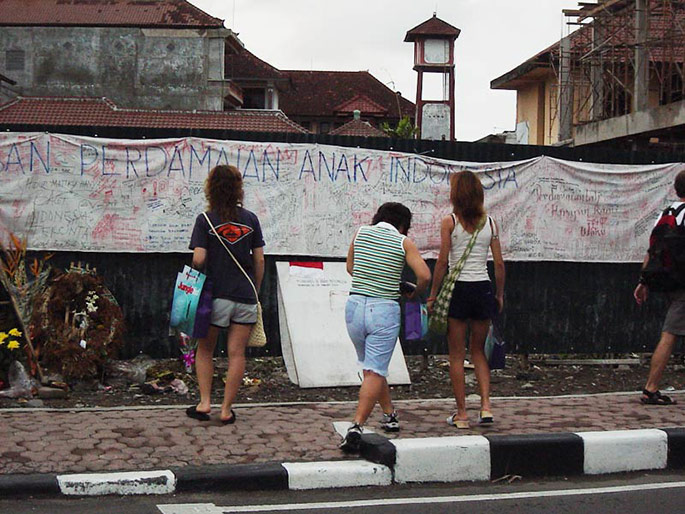At about 11pm on 12 October 2002 three bombs were detonated on the Indonesian island of Bali, two in busy Kuta Beach nightspots and one in front of the American consulate in nearby Denpasar.
Shattering Australia’s sense of distance from the global reach of terrorism, the explosions killed 202 people including 88 Australians.
Carried out by Jemaah Islamiyah, a South-East Asian jihadist organisation with links to al-Qaeda, the attacks were the single largest loss of Australian life due to an act of terror.
Prime Minister John Howard in Bali, 17 October 2002:
So as we grapple inadequately and in despair to try to comprehend what has happened, let us gather ourselves around each other, let us wrap our arms around not only our fellow Australians but our arms around the people of Indonesia, of Bali, let us wrap our arms around the people of other nations and the friends and relatives of the nationals of other countries who have died in this horrible event.
Australia has been affected very deeply, but the Australian spirit has not been broken. The Australian spirit will remain strong and free and open and tolerant.
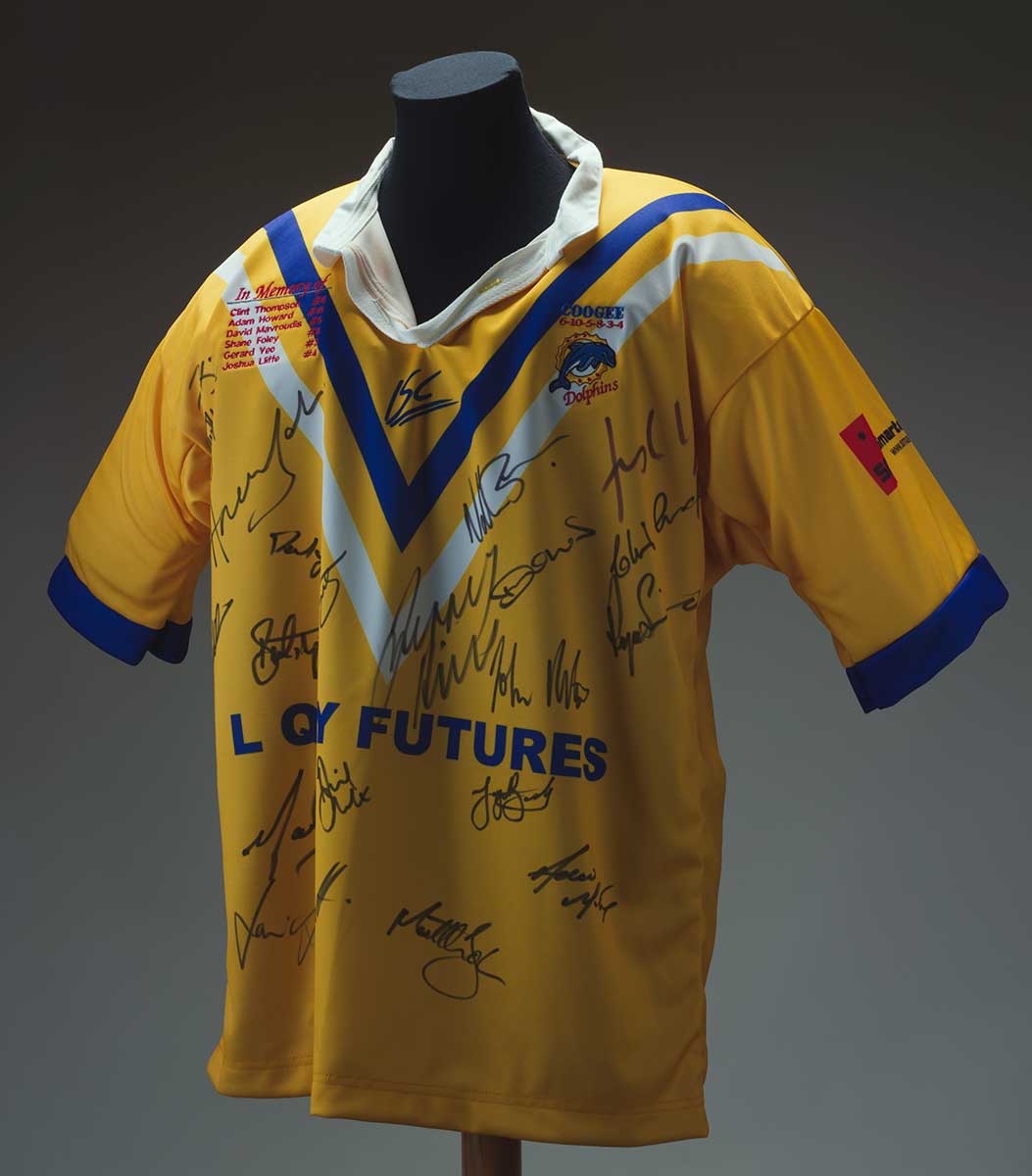
Australians in Bali
Many Australian surfers began visiting Bali in the 1970s and it quickly became a popular holiday destination. By 2002, around 20,000 Australians – families, sporting clubs and other holidaymakers – visited Bali every month.
The attackers targeted a busy tourist strip on a Saturday night. The first explosion at Kuta was caused by a suicide bomber in Paddy’s bar and the second by a bomb in a van parked outside the Sari Club.
The victims were citizens of more than 20 countries, with Australia suffering the largest loss of life. Thirty-nine Indonesians, including many who worked in the tourism industry, also died. Hundreds more people were wounded.
Journalist Alan Atkinson, reporting live to the ABC Sydney news desk, 13 October 2002:
I’m standing outside Paddy’s or what’s left of it in the normally bustling Legian street in the middle of Kuta. Where the footpaths would normally be jam-packed with shoppers and Balinese offering taxi rides, there’s debris, glass and bodies.
I’ve counted 50 bodies covered in white sheets lined up on the footpath as rescue workers toil through the ruins of the two nightspots. They’re still bringing bodies out. Both clubs, on opposite sides of the street, were packed at around 11 o’clock last night when the bombs went off.
The force of the blasts was so great that for about a kilometre around the scene, plate glass windows of shops and big stores were shattered. And the normally smiling Balinese, who would usually be offering to sell you their goods, are standing outside their shops or watching the rescue effort in stunned disbelief.
Australian Government response
Australia’s response was led by the Department of Foreign Affairs and Trade’s consular and crisis management service and involved organisations including the Australian Federal Police, the Australian Defence Force and the Australian Security Intelligence Organisation.
A complex aero-medical rescue operation to begin evacuating the injured to Australian hospitals was carried out by the Australian Defence Force.
Within hours, the Australian Federal Police mobilised Operation Alliance and staff working in disaster victim identification, forensic investigation, intelligence, administration, security, IT and communications began assisting the Indonesian National Police investigation.
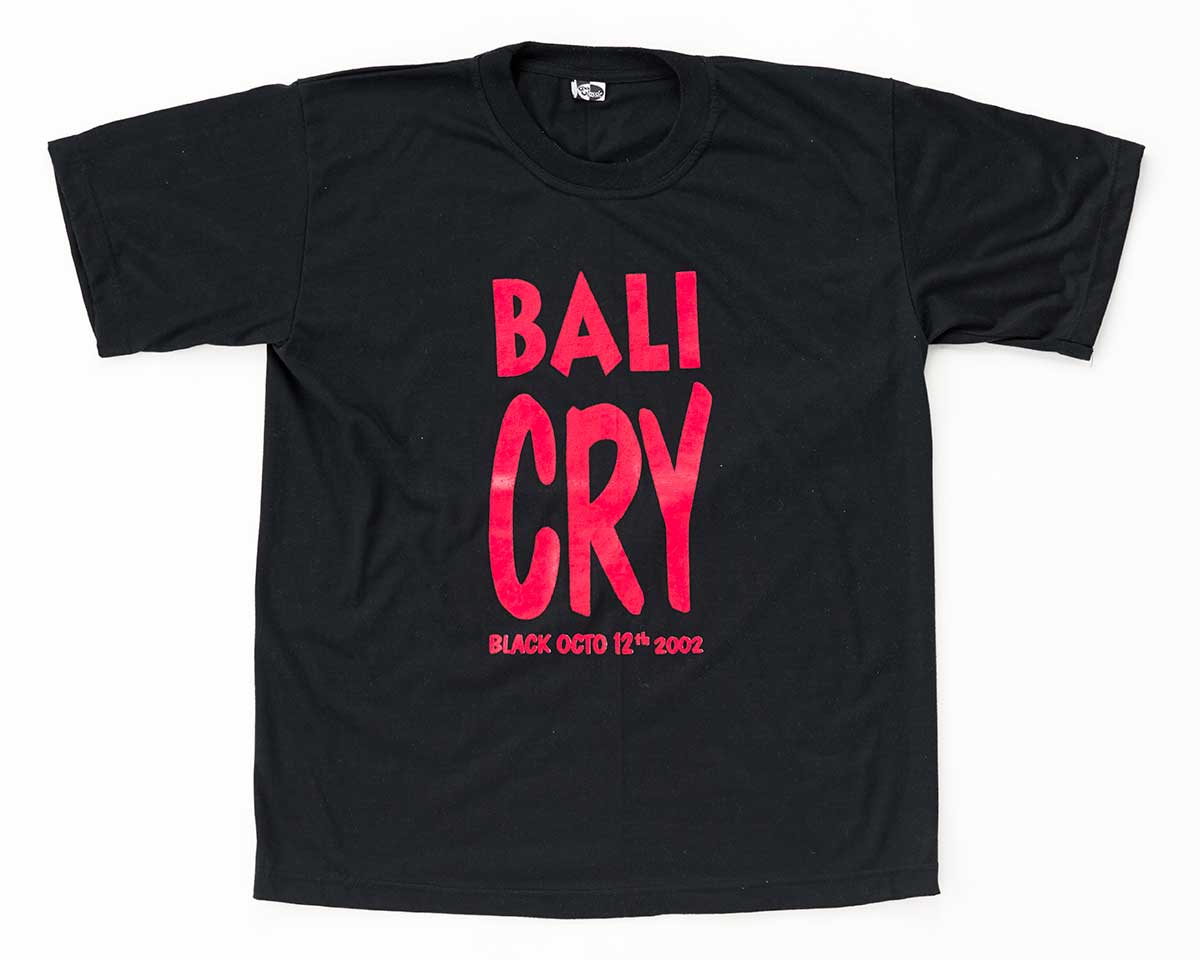
Everyday heroes
Out of the destruction came many stories of ordinary people making extraordinary efforts to help those affected. People who were injured in the blasts stayed to assist others and locals and foreigners went to the bomb sites to help.
Tourists with medical skills worked with Indonesian medical staff on the streets and at local hospitals. Australian and Indonesian consular and medical staff made extraordinary efforts to trace and assist those involved.
In 2003 almost 200 Australians received special honours for their bravery or assistance following the bombings.
Terrorism strikes close to home
News of the Bali attacks shocked Australians. Terrorism had never struck so close to home, despite growing regional unease following the 1999–2000 humanitarian crisis in East Timor and the Howard government’s alliance with the United States’ ‘war on terror’ after the 2001 al-Qaeda attacks in America.
Many members of Jemaah Islamiyah were eventually arrested for their involvement in the 2002 Bali attacks.
The security of the region was further threatened by the bombing of the Marriott hotel in Jakarta in 2003, an attack on the Australian embassy in Jakarta in 2004 and another attack in Bali in 2005.
Memorials and commemoration
In 2002 ceremonies commemorating those who died and were injured in Bali were held across Australia. A National Memorial Service was held at Parliament House in Canberra. Many Australians left cards and gifts at their state parliaments in a gesture of collective anguish.
After the bombings, a memorial to those who died was built at the intersection of two streets adjacent to the Sari Club and Paddy’s bar.
Other memorials have been built across Australia, including at Dolphins Point in Coogee, Sydney, and have become sites for commemorative events.
Assistant Minister for Foreign Affairs, the Hon Tim Watts MP, at a commemorative event in Bali, 12 October 2022:
Twenty years later, the pain is still felt. That night remains seared into the national memories of Indonesians, Australians and so many others. We will always remember those 202 innocent people – most under the age of 40, the youngest just 13 years old.
Today, we pay tribute to those who died. We stand with the survivors, relatives and families and support them at this time. And we remember the valour and the quiet courage of those who saw the worst of humanity and responded with the best.
So many words have been spoken, and so many tears shed, over that night. And we know that for those who lived through it, and for those who lost loved ones, none of it will ever be enough. Nothing can bring back the lives and the innocence that we lost that day.
Australia maintains close political and social ties with Indonesia. The tragedy led to greater cooperative measures in transnational crime and counterterrorism, disaster victim identification and medical innovation.
In our collection
References
Alan Atkinson, Three Weeks in Bali: A Personal Account of the Bali Bombing, ABC Books, Sydney, 2002.
Phil Britten, Rebecca Britten and Malcom Quekett, Undefeated: The Story of Bali Bombing Survivor Phil Britten, University of Western Australia Publishing, 2012.
Ian Kemish, The Consul, University of Queensland Press, 2022.
Patrick Lindsay, Back from the Dead: Peter Hughes’ Story of Hope and Survival after Bali, Random House Australia, Milsons Point, 2003.
Nicole McLean, Stronger Now: How an Ordinary Australian Girl Survived the Bali Bombings, Pan Macmillan Australia, 2012.
